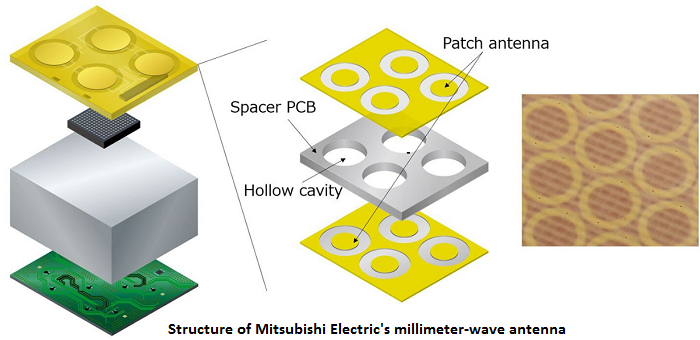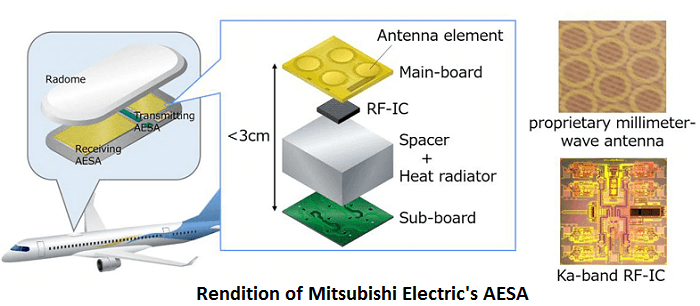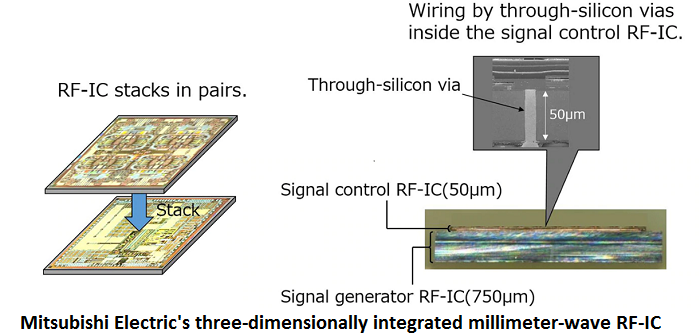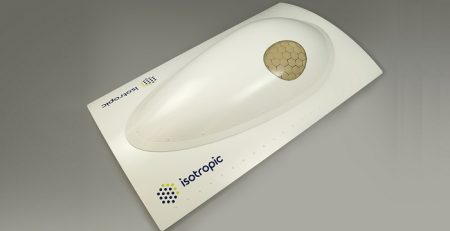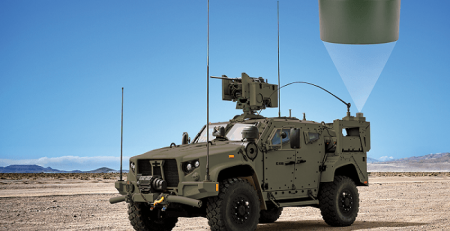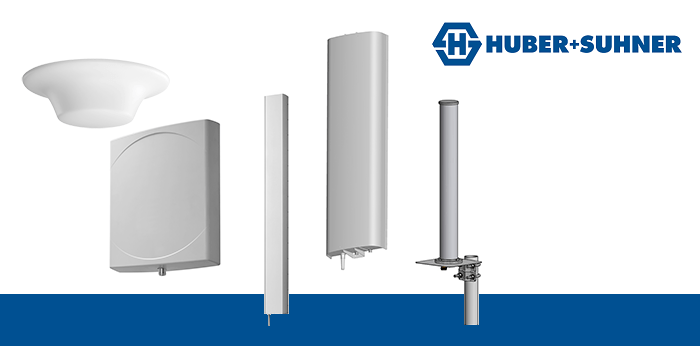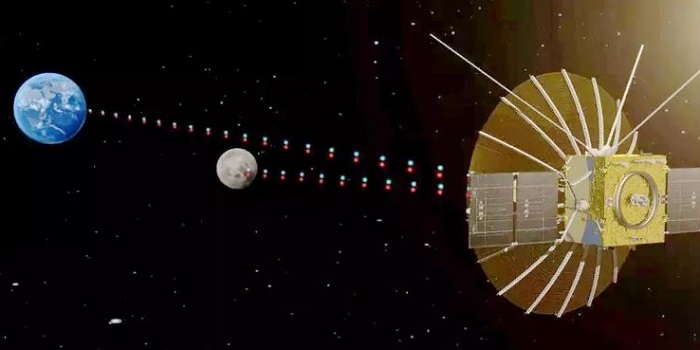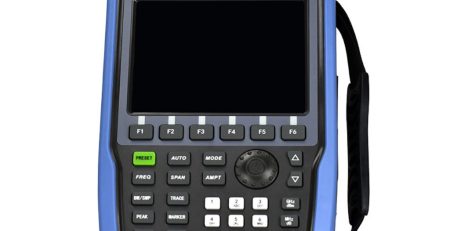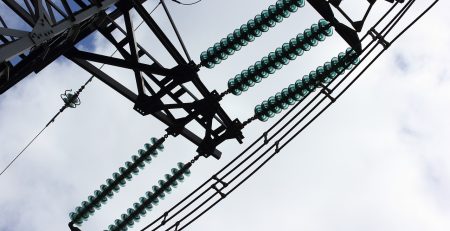Ultra-Thin Active Electronically Steered Antenna Arrays for In-Flight Connectivity
Mitsubishi Electric Corporation in collaboration with Japan’s National Institute of Information and Communications Technology (NICT), has developed a technology for an extra-thin Ka-band (27 to 40 GHz) active electronically steered array antenna (AESA) that is less than three centimeters in height. The antenna has been developed to provide high-speed in-flight connectivity services via satellites with data rates beyond 100 Mbps. The company has also developed the antenna elements and RF circuits for an envisioned millimeter-wave V-band (40 to 75 GHz) AESA that will be capable of delivering in-flight connectivity at even faster speeds in collaboration with Tohoku University and Tohoku MicroTec.
Mitsubishi Electric’s new Ka-band AESA is thin and small enough to be installed in any aircraft, regardless of its size, and it can operate even at high latitudes, which will allow passengers to enjoy on-demand streaming and other high-speed internet services on flights worldwide. Following further testing and demonstrations, the company plans to commercialize its Ka-band AESA after 2023 and a V-band AESA after 2027.
Extra-thin AESA for high-speed satellite communication even at high latitudes in diverse aircraft
Conventionally bulky antennas for satellite communication are not easily installed in small and midsize aircraft because of the space required for the antennas and the devices that mechanically drive them. Mitsubishi Electric has now solved this problem by incorporating antenna elements newly developed by NICT and Mitsubishi Electric’s RF combiner/divider and RF-ICs into a single circuit board and then combining them in a Ka-band AESA featuring the world’s thinnest profile of less than three centimeters.
Mitsubishi Electric has developed a proprietary millimeter-wave antenna with a hollow cavity inside a printed circuit board, which improves the antenna’s circular-polarization quality and electric-power efficiency. The proprietary antenna ensures high performance even when beam steering at an elevation angle of as low as 20 degrees, thereby enabling operation in the high latitudes.
Animated lighting indicates movements of In-Building Mobilities for safety
High power and low-noise amplifiers for transmission/reception circuitry are needed to miniaturize satellite-communication antennas as well as improve their performance. Mitsubishi Electric’s new Ka-band RF-IC incorporates a high-power amplifier boasting an unprecedented power-added efficiency rating of 29.1% (when converting DC input power to RF output signals), 1.8 times that of an existing RF-IC made by Mitsubishi Electric. Also, the RF-IC’s low-noise amplifier achieves an unprecedentedly low noise figure of just 1.8dB, about 20 percent lower than that of a conventional model.
For Mitsubishi Electric’s next-generation V-band AESA, RF-ICs are being miniaturized for arraying at narrower intervals than in the case of the Ka-band AESA. Mitsubishi Electric, in collaboration with Tohoku University and Tohoku MicroTec Co., Ltd., has developed the world’s first three-dimensionally integrated millimeter-wave RF-IC, which it stacks in pairs using through-silicon vias.

